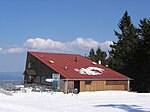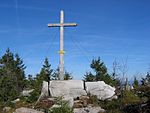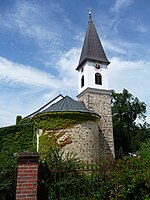Bischofsmais
Lower Bavaria geography stubsMunicipalities in BavariaRegen (district)

Bischofsmais is a municipality in the district of Regen, in Bavaria, Germany. It is well known for winter sports, especially cross-country skiing.
Excerpt from the Wikipedia article Bischofsmais (License: CC BY-SA 3.0, Authors, Images).Bischofsmais
Hauptstraße,
Geographical coordinates (GPS) Address Nearby Places Show on map
Geographical coordinates (GPS)
| Latitude | Longitude |
|---|---|
| N 48.916666666667 ° | E 13.083333333333 ° |
Address
Sparkasse Bischofsmais
Hauptstraße 5
94253
Bavaria, Germany
Open on Google Maps








